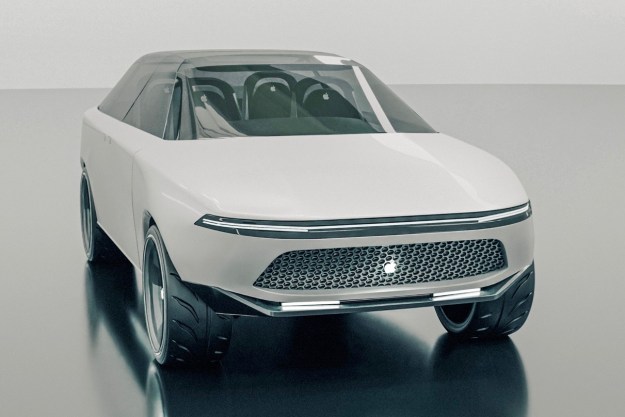 Most development work on self-driving cars focuses on mundane things like getting around parked cars and keeping bugs off sensors, but what about speed? Roborace is trying to develop a racing series for autonomous cars, and has set a Guinness World Record for the world’s fastest self-driving car at 175.49 mph.
Most development work on self-driving cars focuses on mundane things like getting around parked cars and keeping bugs off sensors, but what about speed? Roborace is trying to develop a racing series for autonomous cars, and has set a Guinness World Record for the world’s fastest self-driving car at 175.49 mph.
Roborace’s autonomous race car, dubbed Robocar, made its record runs at Elvington Airfield in the United Kingdom, with Guinness adjudicators on hand. The attempt was made in March, but an official announcement was postponed to coincide with the publication of Guinness’ 2020 record book. Because there was no existing self-driving car top speed record to aim for, Guinness set 160 mph as the unofficial record the Robocar needed to beat. As is standard procedure for top-speed records, officials took the average of runs in opposite directions to come up with the final number.
That 175-mph record speed isn’t that crazy, though. Roborace previously said the Robocar could hit 198 mph, so the car may not have achieved its full potential. The self-driving car’s top speed also seems pedestrian considering that the Bugatti Chiron just hit 304 mph, setting a top-speed record for production cars. But Roborace is unrivaled in the world of autonomous cars.
While Audi has taught some prototype self-driving cars to lap racetracks, speed generally isn’t a priority for developers. Most companies working on self-driving cars plan to use them in ridesharing and delivery services on crowded city streets. In these conditions, a high top speed is unrealistic and, without a human driver to enjoy it, irrelevant. But just as supercars can’t be fully unleashed on public roads, it’s still cool to know that a self-driving car can go so fast.
Unveiled in 2017, the Robocar is powered by four electric motors, producing a combined 402 horsepower. The missile-shaped car doesn’t have room for a driver, taking the human element out of racing. Roborace has conducted numerous demonstration runs, but it’s unclear when we’ll see a fleet of Robocars going wheel to wheel in an actual race. Roborace has said the first season of its race series will feature cars driven by humans at least part of the time.
Editors' Recommendations
- Guinness video celebrates robotic record-breakers
- Cruise woes prompt production halt of fully driverless van
- Cruise autonomous vehicle drives over woman just after she was hit by another car
- Volkswagen is launching its own self-driving car testing program in the U.S.
- Autonomous cars confused by San Francisco’s fog


